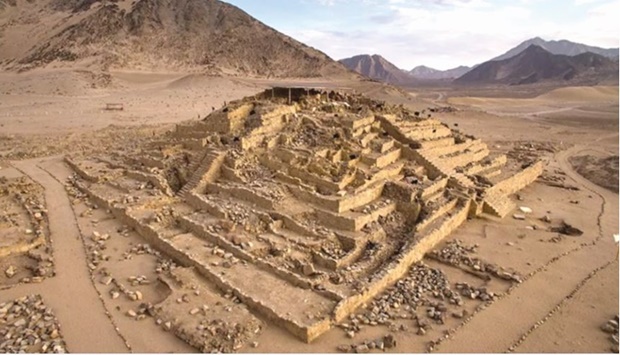The American continent surprises us from time to time with ancient cultures that we did not know existed, showing us new discoveries such as the Caral Civilisation which is believed to be 5,000 years old and located in the Supe district, Barranca province, Lima Region, in Peru and about 182km north of Lima, the Peruvian capital.
Of this citadel, made up of 7 pyramids and 32 mounds, renowned archaeologists such as Max Uhle, Julio C Tello and Paul Kosok carried out research work in 1905, 1937 and 1947, respectively.
It was the Peruvian archaeologist and anthropologist Ruth Shady, who began her work in 1994, and who in 1997 scientifically supported the antiquity of the Caral culture between the years 2700 and 2550 BC, qualified as a civilisation, and who changed the traditional history of the well-known American civilisations, such as the Inca (1300 to 1450 CE), Maya and Aztec, due to the antiquity of Caral, which has constituted until now a permanent challenge for the continuity of research.
The research work was carried out by a team of scientists from the Universidad Nacional Mayor de San Marcos; by the way, the oldest in America (May 12, 1551), and directed by the aforementioned Peruvian archaeologist.
The city of Caral presents characteristics of a civilisation that is not born from a conception of conquest; on the contrary, it is a civilisation that is born from a conception of peace and religiosity.
It remains from a thousand of years with a population of around 3,000 inhabitants; and, even now we do not know the physical characteristics of its inhabitants, since no traces of ceramic work has been found, as in other later Peruvian cultures (Chavín, Mochica, Chimú, Huari, Nazca, Paracas, Chachapoyas, Vicus, Chancay, Lime, etc.).
What is known is their dedication to fishing because they were located 20km from the Pacific Ocean, central interior of the Peruvian coast; also known that the material used for their nets was made of cotton.

In agriculture, they worked the crops of potatoes, squash, beans, sweet potatoes, chilli corn, and pacay (fruit), being close to the Supe River and it is believed that the surplus production was exchanged with other products through barter. Therefore, they built their economy based on agriculture and fishing.
They had a record of their productions through the quipus (numerical representation by knots in cotton threads), as the Incas did.
On the other hand, the musical art consisted of 32 flutes all made from bird bones that have been discovered.
Their constructions were made with stones and mud, in addition, to a peculiar reed basket filled with stones, which were located at the bases and in certain places of the sites, called Shicras, which allowed flexibility to counteract seismic movements, and that were decisive to date the antiquity of Caral.
The most representative constructions are the Greater Pyramid and the Temple of the Amphitheatre, in high and low area. The pyramids, which can be seen today and are still being cleaned, are complemented by rings or circles erected with stone three metres high. As mentioned, Caral is located four hours by car from the capital, in the Supe River Valley, 20km from the coast.
We call it a civilisation for its complex social organisation, politically organised life, and technological development that is still being investigated and a symbol of identity for our ancient populations that exerted an influence and basis to establish the Inca Empire in 1450. They had a ruling elite, priests, and another group of workers.
Caral transcends its time and space, and its legacy was a model for other Peruvian cultures that was born near a river (Supe), as well as what great civilisations did with their unique characteristics: Mesopotamia, Egypt, India, China, and Olmecs.
Hence, its disappearance occurred in 1600 BC and it is believed that the collapse was due to damage inflicted by nature itself, since the main pyramid was found partially destroyed.
It is known that the Caral Civilisation is part of the 12 sites considered by Unesco as world heritage.
This sacred city of Caral deserves to be visited because it transports us back in time to thousands of years as we are still inquiring about the contributions and knowledge of its development over the years.



